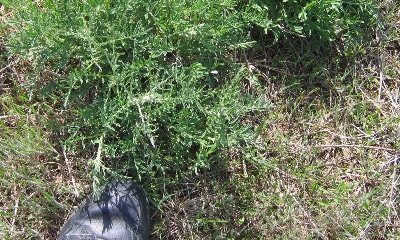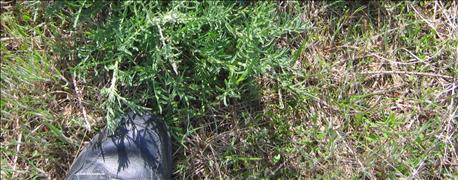July 11, 2016

Pastures are showing signs of weeds. Controlling these weeds is a persistent problem for cattle producers. The level of weed pressure in a given pasture depends on weather conditions, grazing management, and soil fertility.
According to Gene Schmitz, University of Missouri Extension livestock specialist, the best pasture weed control measure is to have a thick stand of grasses and legumes. "This reduces the opportunity for weeds to germinate and grow in a pasture," he notes in a news release. "This is done through effective fertilization and grazing management." Schmitz points out that even under the best management conditions, weeds can become an issue.

TIME TO SPRAY: Weed control is important to keep beef cattle grazing during the summer months.
Identifying the specific weed problem is the first step to weed control. "It is important to know the growth cycle of a particular weed in order to determine the appropriate time to attempt to control it," Schmitz says.
Many cattle producers are reluctant to spray because broadleaf weed herbicides will eliminate legumes from pastures and hay fields. However, Schmitz finds that in some cases, this may actually be a benefit to pastures.
Kevin Bradley, MU Extension Weed Science Specialist, conducted research on spraying pastures for broadleaf weeds and studied how that affected subsequent grazing behavior by beef cattle.
Cattle in Bradley 's study were fitted with GPS collars and this was used to track grazing behavior in sprayed vs. non-sprayed areas of a pasture. Cattle distribution prior to spraying and for one month after spraying showed equal distribution of cattle across both sprayed and non-sprayed parts of the pasture.
Two months after spraying, however, 77% of the cattle distribution was on the sprayed portion of the pasture. Three months after spraying, this increased to 84%. Other locations around the state did not show as dramatic of response, but all sprayed areas had greater distribution of cattle in herbicide treated compared to untreated portions of the pastures.
Bradley summarized that the degree of distribution increase was correlated to initial and final weed density. Greater weed pressure resulted in greater distribution increase for treated areas in the pastures. Only one location, however, showed greater forage yield for treated vs. untreated pasture three months after spraying.
Weed control in pastures and hayfields is a difficult issue to deal with. Producers are reluctant to spray due to the temporary loss of legumes. An alternative might be to focus on the areas with the most weed pressure. Combinations of herbicide treatment, soil fertility management, and grazing management may be enough to help get a severe weed problem under control.
Source: University of Missouri Extension
You May Also Like




